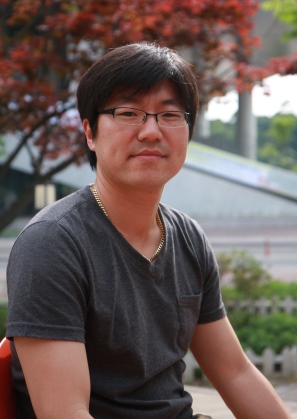The Institute of Electrical and Electronics Engineering (IEEE) is one of the many prestigious associations dedicated to the advancement of technology mainly in the field of electrical engineering. IEEE hosts more than 1,300 conferences and events worldwide on many different topics, and winning the Best Paper Award amongst all the papers submitted is a big honor. The KAIST Herald met with Wang-Sang Lee, one of the main authors in the award-winning paper and the first Asian recipient to win the Best Paper Award in the IEEE International Conference on radio-frequency identification (RFID).

Please introduce yourself.
My name is Wang-Sang Lee and I am a doctoral candidate in the Department of Electrical Engineering at Professor Jong-Won Yu’s Radio Frequency System Solution Laboratory. I have been a doctoral candidate for six semesters. I finished my Bachelor’s at a different university and came to KAIST for my master’s. After getting my master’s degree, I briefly worked at Korea Telecom, a telecommunications service company, and moved onto the Korea Testing Laboratory (KTL), at which I worked for four years. Afterwards, I started my doctoral program in September, 2010.
Please introduce your award-winning paper.
The paper is about widening the coverage of RFID antennas using a dual-beam switching system. Traditionally, barcodes were used to track the movement of cargo and manage supplies in the retail area. However, the barcode system uses optical means for communication, requiring an uninterrupted line of sight between the barcode and reader, which was a nuisance. RFID, on the other hand, does not need an uninterrupted line of sight for the reader to function, and the reception range is up to 10 meters, which is a big advantage compared to barcodes. In the early stages of RFID, companies focused on extending the coverage of the RFID readers. This soon came to a stop, since the reader could detect only a certain amount of RFID tags in the region. Also, multiple readers detecting a single tag and identifying it as two different tags was another issue with using long-range RFID detectors. Thus, the trend shifted from long-range detectors to wide-coverage detectors. Current RFID detectors have blind spots or dead zones in their detection range, meaning that tags in those regions are not picked up by the detectors. The average detection angle is about 60 degrees. Our research uses wide-coverage array antenna with dual-beam switching technology to minimize the blind spots. Theoretically, the detection angle is 180 degrees, meaning the detector has no blind spots. Since the blind spots are reduced, this technology can be applied to many fields, such as retail, cosmetics, and pharmaceuticals.
What were the hardships in your research?
One challenge was finding a suitable testing facility for the RFID detectors. For the testing, we use a special chamber called the radio anechoic chamber, which absorbs reflected electromagnetic waves. This chamber requires controlled humidity and temperature as well as effective radiation absorbent material. Actually, the department has an anechoic chamber at the Electrical Engineering Building, but it has not been taken care of due to its high operational costs. Previously, one of the professors took care of the chamber, but eventually the cost was too much for him to bear on his own, so the chamber has been left alone. I hope that the department will take part in managing the chamber. Since we could not test the detector at KAIST, we had to find an outside testing facility. Luckily, I got the help of my former coworkers at KTL and conducted my experiments there. The testing takes a short time, but setting up the antenna array and tags was the hard part, since the positioning was important to the experiment. Other than that, the experiment went smoothly.
How would you rate KAIST’s Department of Electrical Engineering?
I have to say that I am fairly satisfied with the Department of Electrical Engineering at KAIST. It provides excellent learning opportunities, and the conditions are good for students. Also, there are a lot of benefits for the students; in addition to the scholarships, the department has openings for additional teaching assistants for students in need of monetary aid or wishing to earn a salary. Furthermore, the department conducts annual performance reviews, and students with good performances receive prizes. Giving out prizes was an idea from one of the professors, who funds them. I am honored to have received the grand prize once. Additionally, the collaboration between different laboratories was really helpful. If I come across a difficult and unfamiliar subject, I can ask students at laboratories specialized in the field. This promotes exchange of information between different fields, and I believe this is something to be encouraged.
Do you have any comments for KAIST students and the readers?
This may sound strange, but although studying is important, I believe exercising is equally important as well. Many KAIST students skip exercising because of the heavy workload. However, exercising will increase your strength and lead to better concentration, as well as efficiency, and lower your stress. So I hope KAIST students take a break from their studying once in a while and go exercise, be it soccer, basketball, running, or simple exercises like walking around campus.

